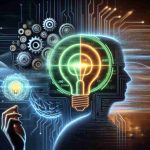OpenAI’s generative model GPT-3 has been making waves not only in natural language processing but also in the realm of code generation. GPT-3, short for “Generative Pre-trained Transformer 3,” is a state-of-the-art language processing AI that has paved the way for new possibilities in automating and assisting coding processes.
Introduced in 2020, GPT-3’s capabilities in code generation have intrigued developers worldwide. By utilizing its remarkable understanding of context and syntax, GPT-3 can produce coherent and functional code snippets across a variety of programming languages. This feature is a game-changer, especially for those seeking to accelerate the process of prototyping or learning new coding methodologies.
A standout feature of GPT-3 in code generation is its ability to translate plain English into code. For instance, a user can describe a simple web page or a mathematical operation in natural language, and GPT-3 can generate the corresponding HTML or Python code. Although it doesn’t replace the need for skilled developers, it offers a powerful tool for debugging, teaching, and augmenting a developer’s workflow.
Error detection and suggestion of improvements are other areas where GPT-3 shows potential, though this requires careful handling due to the AI’s occasional inaccuracies. Nevertheless, it opens a dialogue about the future of code development, where AI serves as a collaborative partner rather than merely an automated tool. As we continue to push the boundaries of AI, GPT-3 stands at the forefront of innovation in code generation, inspiring a new era of coding efficiency and creativity.
Can AI Really Revolutionize Code Generation? Discover the Hidden Impacts of GPT-3!
OpenAI’s GPT-3 is creating an unexpected ripple effect in industries far beyond coding. This potent AI model not only automates code generation but also subtly transforms how education, innovation, and global collaboration function today. But what are the hidden implications of GPT-3’s capabilities? Let’s explore.
Educational Transformation: Imagine a classroom where students learn coding via interactive AI tutors. GPT-3 enhances educational tools by providing instant examples, explanations, and code snippets in various languages. Schools and bootcamps are already considering how this AI can complement traditional teaching methods, thereby adapting to diverse learning styles and speeds.
Democratizing Innovation: With GPT-3, even non-programmers can attempt to build tech solutions by merely providing descriptions in natural language. This opens up tech innovation to a broader audience, potentially leading to an increase in unique and diverse applications. How might this change the landscape of tech entrepreneurship? Could we see a spike in start-up projects due to lowered entry barriers?
Collaborative Development: GPT-3 fosters collaboration across different disciplines and geographies. Researchers and developers worldwide can leverage this AI to iterate rapidly on ideas without waiting for expert intervention, leading to faster progress in projects ranging from healthcare to climate change solutions.
Controversies Persist: However, ethical concerns arise. Users must critically evaluate GPT-3’s outputs to avoid perpetuating bias or generating unintended consequences. Are developers becoming overly reliant on AI tools? Could this lead to skill atrophy in fundamental programming competencies?
For more insights into the transformative power of AI, visit OpenAI. As technology relentlessly evolves, GPT-3 remains a focal point of exciting possibilities and unforeseen challenges, redefining the realms of coding and beyond.


















